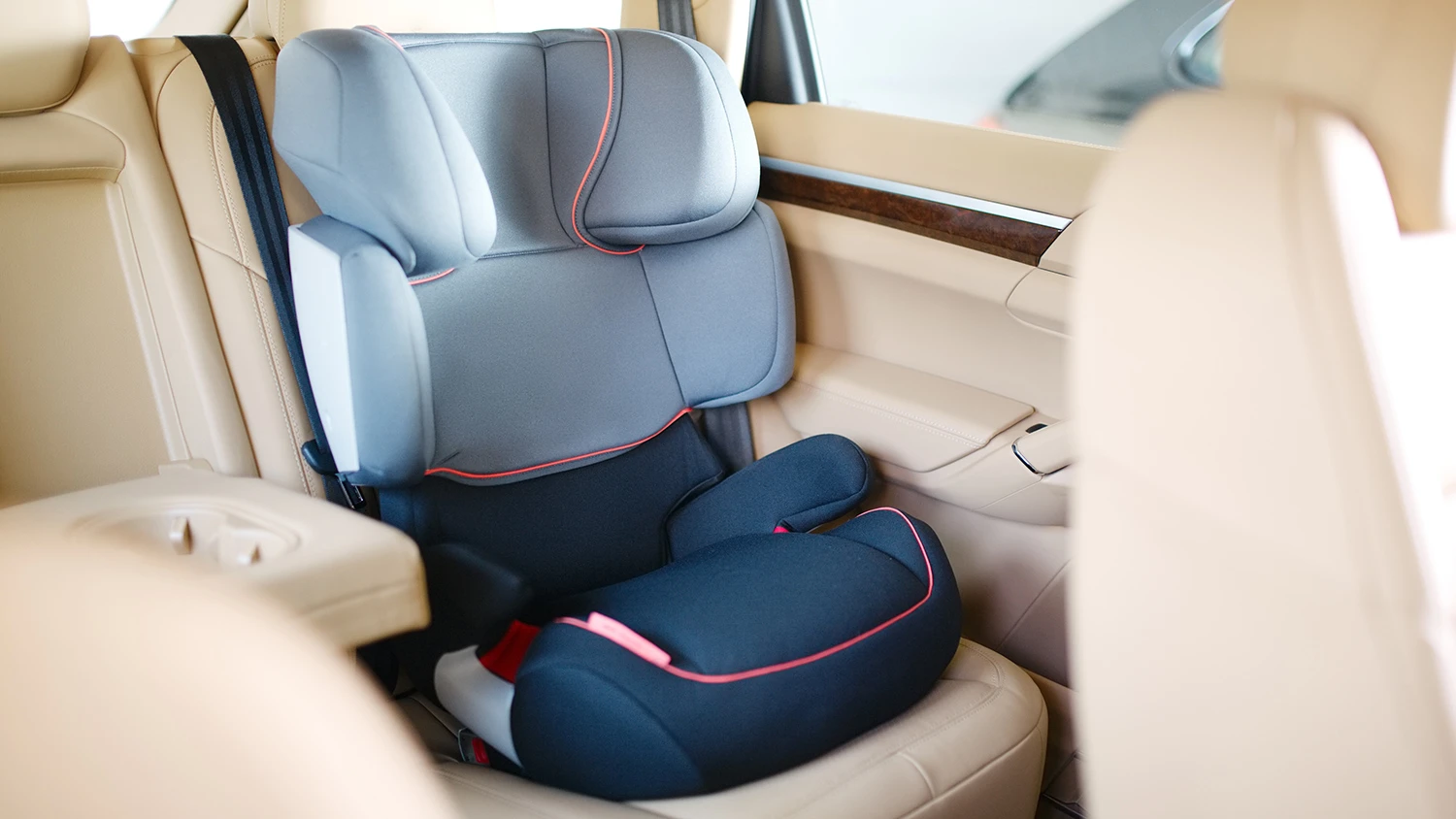“Mom finds 5-month-old son dead in minivan”–August 2012
“Child deaths in hot cars soar in May”–May 2013
“9-month-old dies in hot car after dad goes to work”–June 2014
Each year, we hear the headlines on television news, read the stories online at our desks, and discuss the details around our kitchen tables. We shake our heads in sadness, we hug our children tighter, and we fail to comprehend how a parent or a caretaker could just . . . forget.
I was in one of those places, my dinner table, when my own family began discussing one of the most recent tragedies–two-year-old Cooper Harris–and his murky, but still senseless death. As my own 20-month-old son, Eli, ate (well, played with) his own dinner nearby, my wife, my mother and I discussed how this sort of thing can still happen. We asked, why, with all the amazing technology that we have in this world, is there not something for a parent to purchase to prevent this from accidentally happening to their son or daughter? Why isn’t there a device or product that has the ability to save the lives of 38 children each year?
Turns out, there are a lot of reasons why. And none of them are very good. Here are some of these “barriers” I uncovered and who can help break them down:
1. Product solutions exist, but they’re not being purchased.
There are multiple products that pledge to help parents prevent this accidental tragedy. Many more are “coming soon.” They all use similar technology and most are affordable, yet I know of no parent who owns them let alone uses them. Why? Quite simply, they’re from well-meaning companies and individuals that you’ve probably never heard of. One has to search long and hard to find these products, and then, once you do, their website/packaging/brand name give you little comfort that they’ll be a good investment. While I wholeheartedly applaud these creators’ efforts and I wish they could find success, their solutions lack the big-name-company credibility to get something like this off of the manufacturing conveyor belt and into cars across the country.
Parents strive to buy only the best for their kids and, sadly, never-heard-of, hard-to-find products from small but well-meaning crusaders and companies in corners of the United States aren’t often on that wish list. These companies’ solutions may be sound, but they need support and resources from a larger entity to back their efforts–a baby brand like Johnson & Johnson, an electronics brand like Verizon (who applied for a patent around this subject–three years ago), a reputable VC firm like Andreessen-Horowitz, or, hell, a company like Apple or Google. Whether these household names prioritize creating solutions themselves or back an independent group of creators, their weight and connections will make all the difference in creating the best product that will win the hearts and brains of parents. Which leads us to our next barrier.

2. Most parents refuse to believe it will ever happen to them.
Even if the supply is there–the most advanced, reputable fail-proof solution to save a child from this fate–is there any demand? Judging by the reactions and comments that pour out after each of these accidental actions, many of unconsciously or sub-consciously pass judgment on these moms and dads left to forever live in guilt.
“She is the worst mother.”
“How could you be so dumb to forget your own child?”
“I would NEVER forget my child.”
But, the truth is, you could. And you might. If you’ve read an article about this subject before, you’ve likely seen the laundry list of professions that are held by parents who have suffered this tragedy: doctors, rocket scientists, school principals. Not to say that intelligent parents are always good parents, but past cases go a long way to debunk the theory that IQ or socioeconomic status plays a role.
In fact, many of the sad stories point to something that we lament often about our lives, regardless of profession–how unbelievably busy we are. Weekday mornings (hell, all mornings, noons, and nights) are crazy when you have kids–getting everyone up, ready, fed, and transported to places on time, then off to do a totally different job, whether it’s running errands or running a company. An unpredictable break in a routine or a particularly stressful day is where things often go wrong. And we’ve all had those. Buying an aforementioned product also isn’t giving us permission to forget or not be mindful, it’s providing us a safety net in the form of a solution. Because, these accidents may not always be caused by a simple lapse in memory.
Scientific theories, including the ones explored by neuroscientist and professor David Diamond, PhD, indicate that these sorts of mistakes represent a complicated clash between two types of memory and multiple structures–a breakdown in the amazing, but not perfect human brain. Others, such as British psychologists James Reason’s “Swiss Cheese Model,” point to a coincidental sequence of weaknesses in an otherwise solid structure (much like how holes occasionally all line up in a block of the namesake cheese). In other words, these rare instances can be completely out of our control–no matter how much we care, no matter how much we think we’d do it differently.
So, who can help shift these perceptions?
Creative thinkers. Marketers. Advertisers. Myself, included. As an industry, we create campaigns that get consumers to buy shampoo, try a new Thai restaurant, or book a vacation in Vienna. We can use these same talents to position soon-to-exist tech products in a way that moves them off of shelves and into cars. Yes, it’s selling a product. But it’s a life-changing, life-saving product that many people don’t think they need. They don’t need to need that shampoo or that spicy noodle dish. They need to need this. This product needs a spot on every baby registry, on every children’s store shelf, and in every caretaker’s car. Marketing and advertising has the power to change that. And so does a third group.

3. No formal support exists from safety boards and government leaders.
For decades, infants and toddlers were strapped into car seats that faced the front of the vehicle. Then, in 2002, the American Academy of Pediatrics (AAP) recommended that car seats for infants should face the back of the car instead, increasing their safety during the event of a crash . There was some head-scratching and questioning, but manufacturers fell in line, adapting car seats to fit this new positioning, and parents fell in line and bought these products for their little ones. Soon after, states began passing laws requiring this practice. A few years ago, the AAP released similar guidelines extending the age recommendation another year to age two. More questioning and considering, but parents are adapting to this recommendation as well. Why? The doctors proclaim it. The manufacturers make changes. And the lawmakers legislate it. (And the Ad Council created a marketing campaign around it.) So why can’t these same groups (and others) do the same for solutions that save our children from a different kind of vehicular tragedy?
Well, they can.
And, they’ve tried to get involved. In 2012, a government study by the National Highway Traffic Safety Administration (NHTSA) reviewed 18 products and deemed all of them to not be “completely reliable and consistent”–due to factors like child weight shifts or spilled sippy cups. And maybe their conclusions were true (which takes us back to #1). But it also asks a larger question of these groups: how close to perfect does a solution need to be? Show me a seat belt, a car seat, a safety cap, or a baby gate that works 100% of the time. Technology breaks down and improper use occurs. These organizations are right to review products and hold manufacturers to their claims, but a study like that sends a larger message: using nothing is better than using something.
So when a new technology does appear on the market, advisory groups and government organizations should encourage consumers with a different message: the use of products can help you prevent this from happening to your family.That stamp of approval on exploring other options besides just the human brain can shift a nation’s behavior, create a larger marketplace of solutions, and lead to supportive push from government bodies, just like the rear-facing car seat.
So, consider this the gnat in your ear, the push forward, the rallying cry:
Startups: Develop your best idea and find a household name to help you.
Household names: Lift up small groups with big ideas, or use your resources to create on your own.
Marketers: When these products start appearing (hopefully soon!), help them win over a skeptical marketplace.
Advisories and government groups: Make this a national matter. Back the idea of parents taking action and make the use of preventative solutions a credible solution.
Mothers and fathers who have already suffered this loss: Be brave and share your story when you’re ready, much like Lindsey Rogers-Seitz and others. You can help change a world’s outlook and shift fate for future families.
We all must do something–if an average of 38 children die annually from overheating in a car and we’ve already seen 21 deaths in 2014 , then the tragedies aren’t over.
Dan LaCivita is President of Firstborn, a digital creative agency headquartered in New York City.
Recognize your brand’s excellence by applying to this year’s Brands That Matter Awards before the early-rate deadline, May 3.
